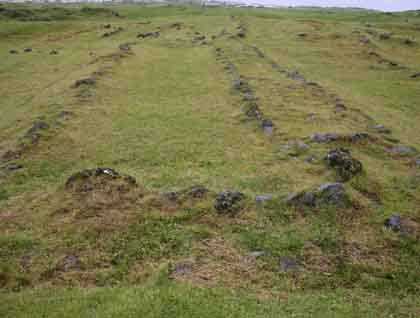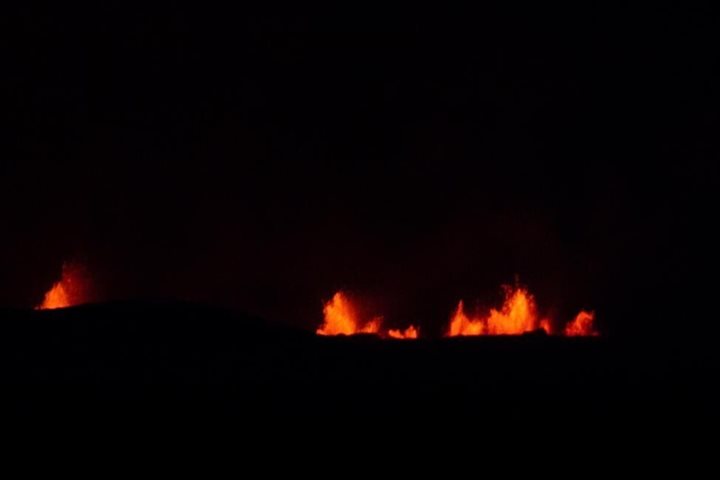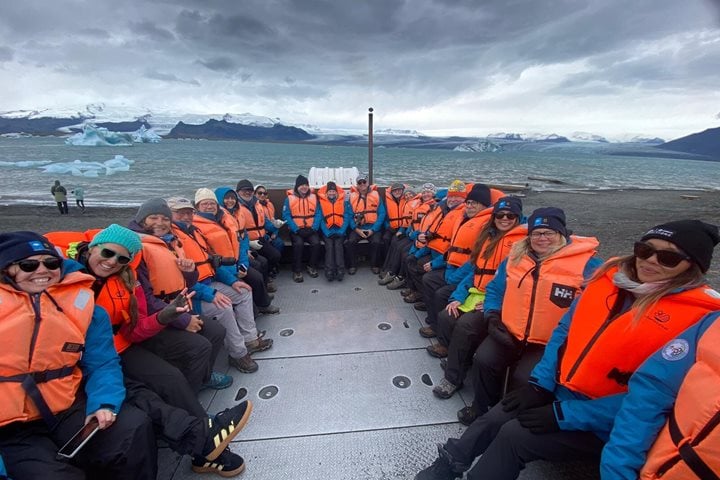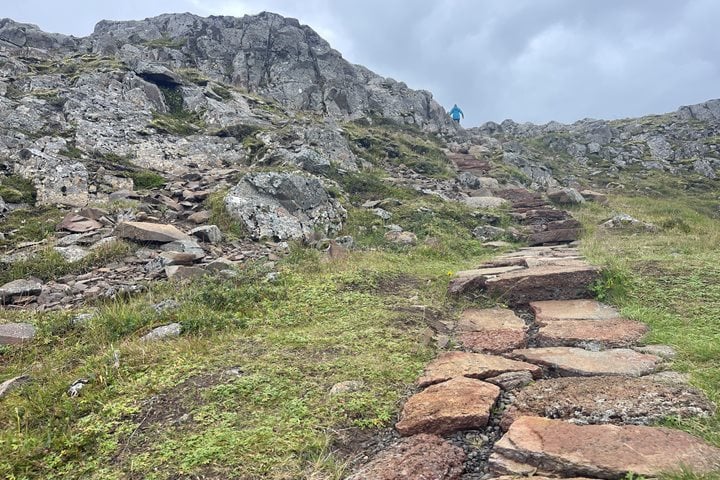We spent the morning at sea, making our way toward Vestmannaeyar, an archipelago of 15 small islands lying off the southwestern coast of Iceland. Named after slaves taken from the British Isles by the Vikings, the main island Heimaey has been inhabited since the 10th century. Tim Severin, our Global Perspectives guest speaker, captivated us with the second part of the account of his voyage across the North Atlantic from Iceland to Newfoundland in a small skin-hulled boat, following in the fabled wake of the Irish saint known as St. Brendan the Navigator.
Shortly before lunch the small island of Surtsey was spotted. The rich waters in this area attract large numbers of fulmar, puffin, kittiwake and northern gannet. As National Geographic Explorer circumnavigated Sutsey we were afforded panoramic views of the Atlantic breakers pounding the fringes of the island. This is the latest addition to the numerous islands lying off-shore of Iceland. In 1963 some fishermen working the waters here were witness to the birth of a new volcanic island. Named after the Norse mythological fire giant Surtr, the eruption lasted until 1967. A restricted area, it has been continuously monitored by biologists and botanists who are charting the colonization of the island by plants and animals.
Our afternoon was spent on Heimaey. This is the main island of the archipelago and has been inhabited since the 10th century when Norse Vikings settled here. Remains of their farm dwellings have been unearthed and provide an insight into their daily life. We visited one of these sites. Now only mute stones outline the erstwhile homes of these remarkable pioneering settlers. Heimaey is a geologist’s paradise. During the night of 23rd January 1973 a 1.6 kilometer-long crack opened up and a dramatic eruption followed which saw the evacuation of most of the island’s 5,000 people to the mainland. Almost a third of the houses on Heimaey were engulfed in lava and ash.
Known as the “Pompeii of the North,” a dedicated museum has been recently opened which has as a centerpiece one of the houses that was buried by ash and has been excavated. Information panels and audio explain the background to the eruption and its aftermath and charts the rejuvenation of the island’s community in the years that followed. Built in the shadow of Eldfell, from the material which had engulfed the original houses, the museum is testament to the tenacity of the people of Heimaey.







